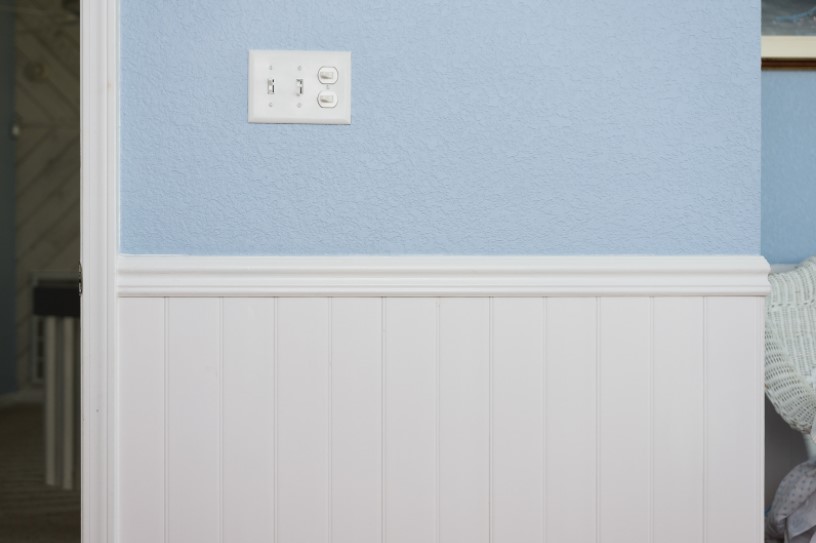Wainscoting and beadboard are both long-standing, well-liked treatments for walls, each with its distinct characteristics.
However, their similar uses often frequently mistaken and lead to confusion.
Let’s break it down:
What Is Wainscoting?
Wainscoting refers to any paneling style covering the lower wall area, usually from one third to half, or sometimes up to two thirds of the wall’s height.
Its main purpose is to protect walls from marks and dents while adding a touch of style to the room.
You’ll find wainscoting in various styles, including but not limited to beadboard, raised panels, flat panels, and the board and batten style.
What Is Beadboard?
Beadboard, on the other hand, is a specific style of wainscoting. This style features vertical lines of thin wood planks with small ridges or ‘beads’ in between.
Beadboard, with its unique charm, gives off a vintage or country-like vibe, making it a popular choice for areas like bathrooms, kitchens, or cottages.
So, to put it simply, while all beadboard is a type of wainscoting, not all wainscoting is beadboard.
There’s a wide range of styles, designs, and materials in wainscoting, with beadboard being just one among many options.
All beadboard is a type of wainscoting, not all wainscoting is beadboard.
Other Paneling Types
Wainscoting
As explained, wainscoting is a decorative paneling style applied to the lower part of the walls. It comes in various designs and materials, with the most popular being beadboard, flat panels, and raised panels.
Beadboard
Beadboard is wainscoting with narrow vertical planks that have a ‘bead’ in between them. This type of paneling adds a charming, country-style look to any space.
Tongue-and-Groove
Tongue-and-groove paneling is a method of fitting similar wood planks together, edge to edge, using a tongue and groove joint. This allows for a tight connection and seamless look.
Shiplap
Shiplap paneling involves wooden boards overlapping slightly to create a rustic, farmhouse-style look. The boards can be painted or stained to match any decor style.
Board and Batten
This type of paneling features wide boards spaced out by smaller strips (battens). It provides a strong geometric pattern, adding a touch of architectural interest to your space.
Raised Panels
Raised panel wainscoting features beveled edges around the frame, creating a three-dimensional look. This design adds a touch of elegance and is often used in formal settings.
Flat Panels
Flat panel wainscoting features a flat panel set within a frame. It offers a simple, clean look, suitable for both traditional and contemporary interiors.
How Does the Appearance of Wainscoting Differ From Beadboard?
Wainscoting can take on many appearances, including beadboard. The term ‘wainscoting’ encompasses a wide variety of paneling styles, while beadboard is a specific, classic look with vertical ‘beaded’ planks.
How Does the Composition of Wainscoting Differ From Beadboard?
Composition-wise, beadboard is a type of wainscoting, so it falls under the wainscoting umbrella.
The ‘beaded’ vertical plank design is what distinguishes beadboard from other wainscoting types.
What Are the Differences in Cost?
The cost can vary depending on the type of wainscoting. Beadboard is typically less expensive than other wainscoting styles due to its straightforward, simple design.
Board and batten or raised panel styles, with their more intricate detailing, can be more costly.
How Easy Are Wainscoting and Beadboard to Install?
Beadboard wainscoting is generally easier to install compared to other wainscoting styles, making it a popular choice for DIY projects.
However, all wainscoting types require some level of precision to ensure proper alignment and fitting.
For more complex styles like raised panels or board and batten, hiring a professional may be the best option to ensure a perfect finish.
